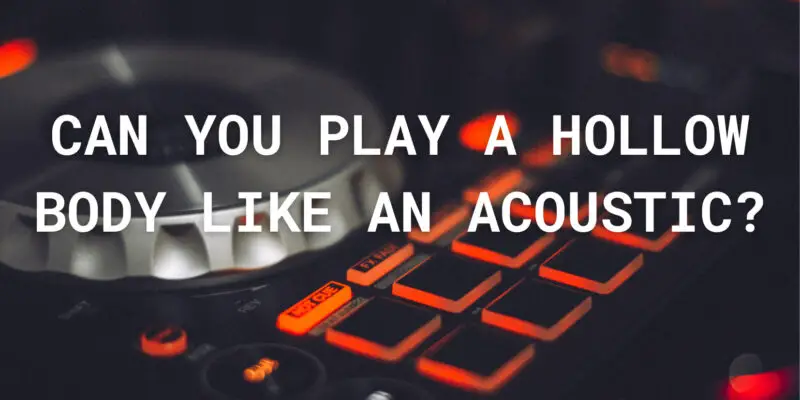Hollow-body guitars are known for their distinctive tone, often associated with jazz, blues, and rockabilly. While these guitars are typically played with amplification, many musicians wonder whether it’s possible to play a hollow-body guitar like an acoustic, unplugged and without the need for amplification. In this article, we’ll explore the versatility of hollow-body guitars and whether they can indeed bridge the gap between the acoustic and electric realms.
- Acoustic Qualities of Hollow-Body Guitars
- Hollow-body guitars, with their hollow sound chambers and resonance, possess some acoustic qualities that set them apart from solid-body electric guitars.
- When played unplugged, a hollow-body guitar can produce a warm and natural acoustic sound that’s similar to an acoustic guitar, though not as loud due to the presence of electric pickups and controls.
- Volume and Projection
- While hollow-body guitars can produce acoustic-like tones, their volume and projection are more limited compared to true acoustic guitars. The acoustic sound of a hollow-body guitar may not carry as well in larger or outdoor settings.
- However, in smaller venues or intimate studio settings, a hollow-body guitar played unplugged can provide a unique and charming acoustic-like experience.
- Tone Control and Versatility
- Hollow-body guitars are known for their tonal versatility, especially when it comes to blending acoustic and electric qualities.
- Musicians can adjust the tone and volume controls to achieve a more acoustic-like timbre, emphasizing the warmth and resonance of the hollow body, while also having the option to blend in the electric pickup for added versatility.
- Fingerstyle and Picking Techniques
- Hollow-body guitars respond well to fingerstyle and picking techniques that are commonly associated with acoustic guitar playing.
- The ability to fingerpick or use hybrid picking techniques allows musicians to evoke acoustic-like nuances and textures on a hollow-body guitar, further bridging the gap between the two guitar worlds.
- Ideal Genres and Styles
- Playing a hollow-body guitar unplugged can be particularly effective in genres like jazz, blues, and folk, where the emphasis is on expression, dynamics, and tonal warmth.
- Musicians who appreciate the acoustic qualities of a hollow-body guitar often use them to create a unique sonic blend that complements their style.
Conclusion
While playing a hollow-body guitar unplugged may not fully replicate the volume and projection of a traditional acoustic guitar, it can bridge the gap between acoustic and electric worlds, offering a unique and charming playing experience. Hollow-body guitars are versatile instruments that respond well to various playing techniques, allowing musicians to evoke acoustic-like qualities while maintaining the option to amplify their sound when needed.
Ultimately, the choice of playing a hollow-body guitar unplugged or with amplification depends on the musician’s preferences, the musical context, and the desired sonic palette. Whether it’s the warm resonance of an acoustic or the electric bite of amplified sound, hollow-body guitars offer a captivating journey through the diverse landscape of guitar music.


